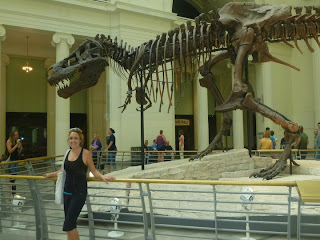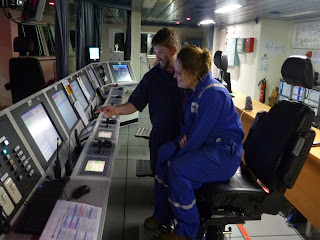Navigational Astronomy
Celestial bodies are in constant motion. There is no fixed position in space from which one can observe absolute motion. Since all motion is relative the position of the observer must be noted.
On earth we see apparent motion of celestial bodies on the celestial sphere. Imagine a dark night, look at the sky the stars are in the inner surface of this vast sphere. Motion on the celestial sphere results from both motions of the earth and the celestial body. These motions can only be identified by special instruments.
The celestial sphere, can be looked at as having an infinite radius because the distances between these bodies are so vast. When measuring the distance between celestial bodies, miles or kilometers are used. For perspective, our closest neighbor, the moon, is 238,855 miles away. Distances between planets however are usually expressed in terms of the astronomical unit (AU), the mean distance between the earth and the sun. This is approximately 92,960,000. So it is 1 AU. From the earth to the moon it is 0.00257 A.U. Distances. If we are measuring distances to the stars, we use light years. The distance light travels in a year. The speed of light is 1.86 x 10^5 miles per second. There are 3.16 x 10^7 seconds per year, therefore the length of a light year is 5.88 x 10^12 miles. Our nearest star is Alpha Centauri, and it is 4.2 light years away. Most stars are more than a 100 lightyears away. (I see why the millennium falcon made frequent jumps to hyperspace) The most distant galaxies we know of are several billion lightyears away.

******************************Science Break***********************************
How can anyone look and the stars without smiling in awe. When I look at the sky and see how big and vast space is, it literally takes my breath away. I know I can be dramatic, but sometimes I want to just scream its so beautiful and amazing! I remember doing field work in the Arbuckles. I woke up in the middle of the night, looked at the stars and I pictured myself with a butterfly net catching them there were so many. Theres something in my heart that just goes crazy when I look at the stars. My favorite piece of camping equipment is a pocket constellation chart that glows in the dark :)
Song of the day: The Stars - Grace Potter
*****************************************************************************
When looking into the sky you notice that stars vary in brightness. The relative brightness of celestial bodies is indicated by a scale of stellar magnitudes. Initially, astronomers divided the stars into 6 groups, the 20 brightest stars were considered as of the first magnitude, and so on. It has become more precise through the years and now uses the magic number 2.512 to rank brightness. For example, a first magnitude star is 2.152 brighter than a second magnitude star and so on. Then the stars are classified, for example. The stars that are brighter than 1.50 are first magnitude stars and the stars in range from 1.51 and 2.50 are second magnitude stars. So the number is increasing with decreasing brightness, slightly counter intuitive. Or as Kelsey’s Prof says its not counter intuitive, you just have the wrong intuition. So from our location, the suns brightness is measured at -26.7, because it is extremely bright.
Astronomers are interested in two types of motion. Rotation about an axis (picture spinning a globe), and revolution ( picture spinning the globe in your hand, while ice skating in a circle). In the center of the circle there is the sun, which is the primary. The entire solar system is held together by the gravitational force of the sun. This system then revolves around the milky way galaxy, then the milky way is in motion relative to its neighboring galaxies. These hierarchies of motion are all caused by the force of gravity. This force causes the planets to go around the sun in circular, elliptical orbits.
Vocabulary
In each planets orbit,
Perihelion: the point closest to the sun
Aphelion: the farthest point from the sun.
Line of apsides: the line joining perihelion and aphelion.
In the orbit of the moon,
Perigee: the point nearest earth
Apogee: the point farthest from earth
Planets
Regarding celestial navigation, there are only four commonly used planets. Venus, Mars, Jupiter, and Saturn. The orbits of planets lie in the same plane as the earth. So if we are observing from earth, these planets are confined to a strip in the celestial sphere near the elliptic, which is an intersection of mean plane of the earths orbit around the sun with the celestial sphere. This image I found might help understand.
The two planets with smaller orbits than us (us meaning, earth) are called inferior planets, and those with larger, superior planets. The ones closest to the sun are the inner planets and the ones farthest are the outer planets.
How can planets be identified in the sky with the naked eye?
“ Twinkle twinkle little STAR how I wonder where you are? “
Planets don’t twinkle! Go out side and look the stars twinkle, if they don’t they are a planet (if moving probably an airplane lol )
The Earth
So for navigation the earth is considered a sphere, but it is really an oblate spheroid, or an ellipsoid of revolution.
The Inferior Planets
Mercury and Venus are inside the earths orbit, so they appear in the neighborhood of our sun. They are seen in the eastern sky before sunrise or in the western sky after sunset.
When we cant see them, they are either between us and the sun, inferior conjunction, or on the opposite side of the sun from the earth, superior conjunction. Mercury doesn’t reach a very far from the sun, so we don’t really use it for Nav. Venus however gets 47˚ from the sun, so venus dominates the morning and evening sky!
My neighbor in Dallas has like a NASA style telescope and seeing venus is really awesome!
Superior Planets
As planets outside the earths orbit, the superior planets cannot pass between the sun and the earth. We see them move away from the sun until they are opposite the sun in the sky, opposition. The superior planets observed with against the background stars, normally move eastward, direct motion. At opposition, a planet will slow down pause then head in the opposite direction, westward, which is retrogade motion, until it reaches the next secondary point, then heads back in direct motion. It is important to remember this is what we are seeing relative to our position not necessarily, what is actually happening. From the reading I am doing, Celestial Nav is really big on RELATIVITY! The superior planets are the brightest and closest at opposition, the time between oppositions is the synodic period. The period is longer for the closest planet, mars and becomes shorter with distance away.
Planetary Identifying Characteristics
Mars: Orange Color, Brightness -2.8, increasing brightness at opposition , opposition every 780 days, visible for about 330 days on either side of opposition.
Jupiter: Largest planet, normally outshines mars, oppositions every 400 days, visibility 180 days before and after
Saturn: outer most of navigational planets, opposition every 380 days, visible for 175 days before and after. With good binoculars, saturn appears elongated due to its rings. (Shout out to saturn my fav planet as a kid!, now I’m all about mars)
THE MOON
The moon is the only satellite of direct navigational interest. It revolves around the earth once in about 27.3 days, as measured with respect to the stars. The sidereal month. Ok twilight fans, when the moon is in conjunction with the sun (New Moon), it rises and sets with the sun. The moon is always moving eastward at about 12.2˚ per day, so at sometime after conjunction a thin lunar crescent can be observed. For the next couple weeks the moon will wax, becoming more and more illuminated. From day to day it will rise and set later and later. Then eventually it will begin to wane. This is much easier seen then described. See pic below :)
Ok so all of this is really just introducing the subject, I am now going to read and dig deeper into the topic. I have always been so interested in this, I don’t know why I never learned it before now. Anyways, I am definitely determined to master the subject.
I love science so much, but when science blends with some type of art. It is like the ultimate best of both worlds ! Its like peanut butter and chocolate, or sea salt and caramel! I feel like navigation blends art with science, and thats why I love it so much.
I am busy today, so I will read more later about celestial nav. The well we are at is a tight well which means everything is extremely confidential and I cant say anything about what I am doing or seeing, thats also why my blog is lacking some geology.... b.c I cant talk about it :/ TOP SECRET :)
























